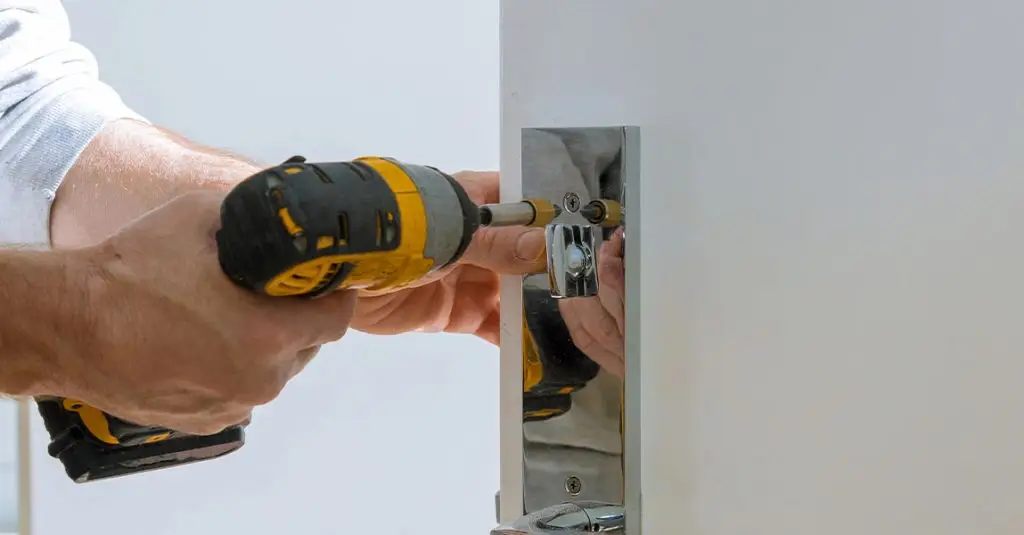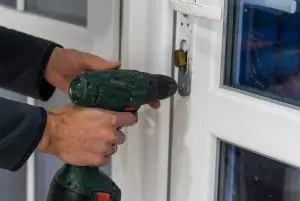Understanding Fire Exit Hardware: Legal and Practical Requirements
As a business owner, fire exit compliance is not just about avoiding penalties. In other words, it’s a matter of keeping people safe in critical moments. We often explain to clients that exit hardware must meet local and national building codes, such as those outlined by the National Fire Code of Canada. Therefore, all emergency exits must open without keys, tools, or specialized knowledge.
Panic bars, also known as crash bars, are commonly required for this purpose. That is to say, these devices must be easy to use even in low visibility. Likewise, any device added to a fire exit door must not hinder its ability to open quickly and fully. Businesses need to review these codes regularly. To clarify, requirements can change depending on the type of occupancy or use of the building.
Common Compliance Failures That Lead to Safety Risks
In our experience, one of the most frequent violations involves locking mechanisms that restrict egress. For instance, some business owners mistakenly add deadbolts to fire exit doors, thinking they improve security. However, this is a clear violation in most jurisdictions. Similarly, blocked exit paths or doors with broken panic hardware create hazards.
Another common oversight includes failing to maintain operability over time. For example, a panic bar might work during installation but later fail due to rust or lack of upkeep. Consequently, we always advise regular inspections and hardware tests. In addition, the signage above fire exits must be visible and illuminated. Improper or missing signage can also lead to failed inspections and fines.
The Role of a Commercial Locksmith in Ensuring Compliance
Our team often helps assess and replace non-compliant hardware with approved fire exit solutions. Moreover, we understand how to match hardware to the door type and usage level. The role of a commercial locksmith is not only to install panic hardware but also to verify that it meets safety standards. Calgary businesses often need this service after a failed inspection.
In many cases, commercial properties require modifications that blend fire safety with controlled access. That is to say, we install delayed egress systems or electric strikes that allow for safe exits while maintaining access control. If you are unsure about your hardware, it’s worth consulting a commercial locksmith in Calgary to assess the current setup.
Fire Department and Inspector Expectations
To remain compliant, businesses must align with the fire marshal’s expectations. That means hardware must open instantly under pressure without electronic input. During fire drills or inspections, exit doors should function correctly even during power failures. Therefore, battery backup systems or mechanical overrides are recommended.
Inspectors typically test the door by pushing the hardware and checking how quickly and freely it opens. In other words, any door resistance or failure can lead to a failed report. For businesses that rely on electrified locks or access control, it’s crucial to ensure the system is fire-rated. If the system doesn’t release the door automatically during an emergency, it is non-compliant.
Planning Upgrades and Avoiding Retrofitting Mistakes
Businesses often decide to upgrade fire exit doors during renovation. However, if the hardware installed is not fire-rated, that upgrade could backfire. For example, replacing a push bar with a decorative lever could violate code. Consequently, we recommend that building owners consult before making changes.
Retrofitting must be done carefully and with approval. To clarify, simply adding a panic bar doesn’t automatically make a door compliant. The door, the frame, the closer, and the hardware all play a role in determining the final fire rating. When we upgrade exit doors, we always consider the system as a whole. If you’re considering updates, start by reviewing code-aligned options at Calgary locksmith services.
Integrated Alarm Systems and Their Role in Compliance
Some fire exit doors include alarms that sound when opened. These systems are especially common in retail or healthcare buildings. That is to say, they deter unauthorized use while still allowing fast egress. However, the alarm cannot delay exit during an emergency. Likewise, the alarm system must reset easily and should not interfere with compliance.
We also install delayed egress systems, which are allowed only under strict conditions. For example, in some facilities, the door may delay opening for up to 15 seconds while sounding an alarm. This is common in memory care units or detention areas. Still, delayed egress requires special approval. In short, compliance depends on both the hardware and how it is used.
Fire Drills and Real-World Testing for Business Safety
Even if your hardware meets code, real-world testing is critical. During fire drills, staff must practice opening fire exits under pressure. Therefore, regular drills help ensure employees understand the hardware and exit routes. We’ve seen situations where panic bars work but are unfamiliar to staff, causing delay.
Regular maintenance checks should go beyond testing locks. In addition, we look at the door swing, closing speed, and how well the bar resets. This ensures compliance and reliability under pressure. When reviewing your fire drill schedule or inspection plan, it’s worth confirming all hardware is still functional and compliant. For help, contact a local locksmith service experienced in fire-rated installations.
Final Thoughts on Building Responsibility and Prevention
Ultimately, fire exit hardware compliance is about life safety. Above all, it protects employees, customers, and property during an emergency. We encourage every business in Calgary to take this seriously. That means checking that all exit doors are unobstructed, labeled, and operational.
Our team regularly provides full inspections and upgrades for buildings facing compliance concerns. If your business hasn’t evaluated its hardware recently, now is the time. In conclusion, understanding and acting on fire exit compliance helps you protect lives and avoid liability. For professional support, Calgary Locksmith Services is here to assist.
FAQs
What is considered compliant fire exit hardware?
Compliant hardware allows exit without keys or tools and opens under pressure. Panic bars, crash bars, and fire-rated electric releases are the most common types.
Can a deadbolt be installed on a fire exit door?
No, fire exit doors must allow immediate egress. A deadbolt that restricts exit violates most fire safety codes.
Do electrified locks meet fire exit standards?
Only if they fail safe and release immediately during a fire or power outage. Additional requirements apply based on occupancy.
How often should fire exit hardware be tested?
We recommend monthly testing, along with fire drills. Businesses should also test hardware after any building maintenance or upgrade.
Are alarmed exits allowed in commercial buildings?
Yes, but the alarm must not delay egress. Alarms are used to deter misuse but cannot interfere with emergency use.





